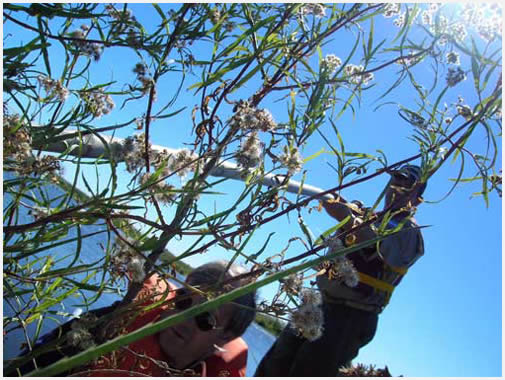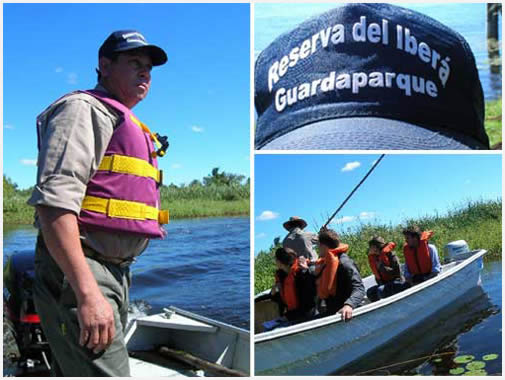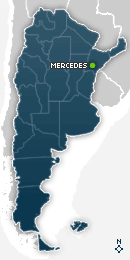  Pablo Etchevers Pablo Etchevers
Some of them used to be hunters, but they are tourist guides today; others live on agricultural activities and there are also the ancient islanders who still live on the produce of the land and, of course, the water. |
The First Men
It is not known exactly who the first dwellers of the wetlands and marshlands were. The fact is that the Guaraní Indians (who lived on solid ground) and some riverside towns (both on the Uruguay and Paraná banks) were the first ones to penetrate these easily flooded areas.
Towards the XVII century, the Jesuit missionaries founded small towns around these lagoons. Loreto, San Miguel and Concepción are the most outstanding.
Although it is not possible to determine if the present wetlands inhabitants are descendents of the natives, many of the codes and philosophy of life are kept intact as time goes by. |
 |
Until not long ago, the permanent residents of the wetlands were involved in poaching activities. Caymans and capybaras were the favorite preys, which were then marketed in the nearest saddleries, tanneries, ports and airports.
Today, the situation seems to be about to change, but it is not easy, since in the big cities, items made of capybara and caiman leather are still sold. And the most terrible fact is that they are in great demand. |
 |
Starting Over
Abuse, and above all, the fact that this was no man’s land, led to an intense decrease in the leather and skin industry throughout the Iberá area. It was not due to the lack of demand, but to the lack of animals to "skin", says Don Ramiro, a former hunter who guided us through one of the many paths in this beautiful reserve.
At the beginning of the 1980s the old “mariscadores” (those who hunted to sell the skins) found themselves without any species left to hunt. Thus, the Province of Corrientes made an exemplary and successful decision. In 1983, the legislature in Corrientes passed Regulation 3,771 to create the Iberá Natural Reserve, which became the largest Argentinian protected area, which occupied 1.3 millions hectares. This was followed by other national regulations which protected the resource. |
 |
Ever since, some of these hunters have been summoned by the province to become “forest rangers”, and contribute their knowledge and experience to helping the local fauna.
Today, the Iberá Wetlands are populated with caimans (even very big ones), giant otters, capybaras, and deer of the swamps, among many other species which are beginning to reproduce.
There is just one step from good to evil and vice versa. A thin line which could offer inexhaustible benefits if the Argentinian government took advantage of it. This is what tourism is about. |
|
Welcome Argentina - People & Characters in Esteros del Iberá
© 2003-2025 Total or partial reproduction forbidden. Derechos de Autor 675246 Ley 11723
|



| |

Maybe this is the reason why it is necessary to have a legislature appropriate to present times. Native animal species are becoming fewer and fewer, but we should not forget that man is a native species which many times has lived in the same environments for generations. The government’s idea of turning former hunters into tourist guides is a huge step. This example should be followed. The idea of privatizing lands, even with people inside them, is useless. Human and animal life should be never within the perimeter of a fence.
|
|

|


